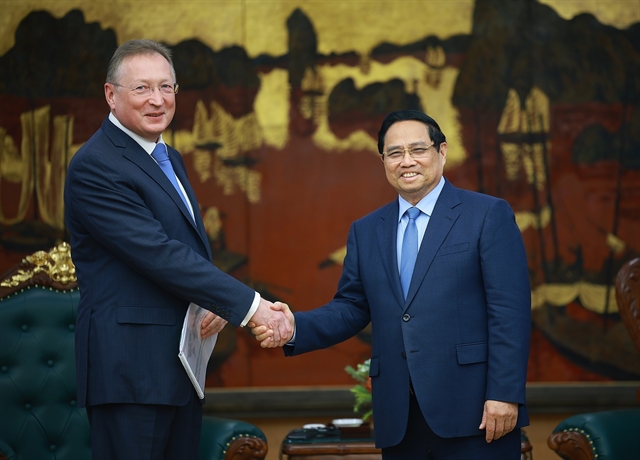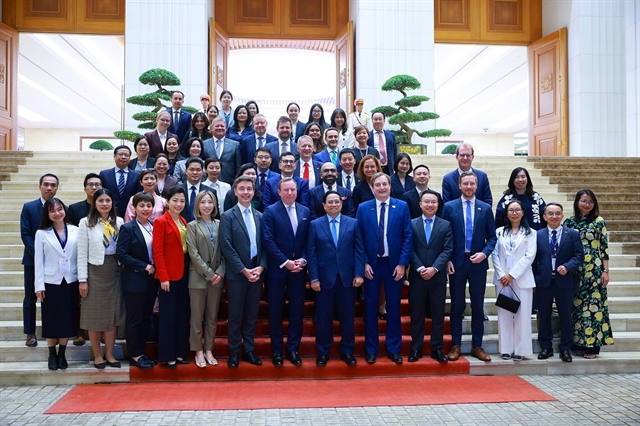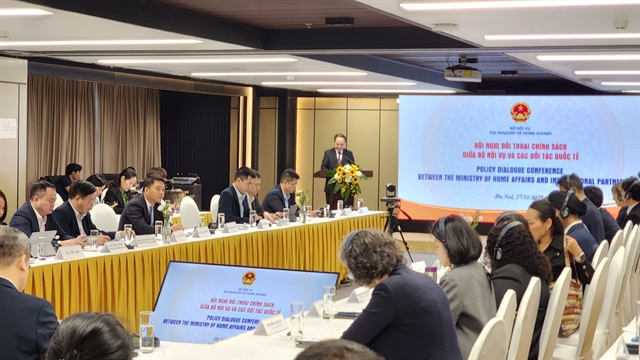 Life & Style
Life & Style

HÀ NỘI — The Centre for Temple of Literature Cultural and Scientific Activities organises the installation exhibition titled Dấu xưa văn hiến (Traces of Ancient Culture) at Thái Học Hall, Temple of Literature.
With the theme of Soi bóng Thăng Long (Reflection of Thăng Long), the exhibition features installation works by nine artists who explore diverse expressions of water linked with the ancient Thăng Long Citadel through a contemporary viewpoint.
 |
| The installation exhibition “Traces of Ancient Culture” showcases the heritage of Thăng Long culture through a contemporary lens. — VNA/VNS Photo Đinh Thuận |
The exhibition introduces visitors to stories involving Vietnamese cultural identity: about the first civilisation to explore the region, water improvement, battles in history linked with national heroes, and river festivities of the Thăng Long-Hà Nội region.
The artworks also reinvent historical relics through various periods of Thăng Long-Hà Nội region such as the Temple of Literature, Thăng Long Imperial Citadel, One Pillar Pagoda, Đồng Xuân Market and Long Biên Bridge, depicting the unique cultural development of the ancient capital.
The exhibition is divided into eight water-related themes about the Thăng Long-Hà Nội region that connect suitably through the contemporary lens.
The work Vũ Điệu Thăng Long (Thăng Long Dance) created with synthetic materials by sculptor Nguyễn Trường Giang portrays the rhythm of the flow down the Red River.
Artist Phan Minh Bạch created the artwork titled Hoa Sóng – Sóng Nước Nở Hoa (Wave Flowers - Flowering Water Waves) including three large-sized silk paintings. The work illustrates the Tô Lịch River, the Dragon symbol of the Lý Dynasty and West Lake through projection technology.
Artist Phạm Trung Hưng features modern technology in his work titled Mạch Nguồn (The Source) on the theme of reclamation, cultivation and harvesting. The artist used modern 3D mapping technology but still created a harmonious interaction with the architectural space of Thái Học Hall.
According to artist Vũ Xuân Đông, he and the other artists spent a long time dividing and curating ideas to deliver a harmonious overall concept for the exhibition.
Lê Xuân Kiêu, director of the Centre for Temple of Literature Cultural and Scientific Activities, highlighted the exhibition's role in showcasing Vietnamese history and the cultural heritage of Thăng Long Citadel through a contemporary lens.
"I hope that the exhibition could promote the Temple of Literature as a potential cultural and artistic space, inspiring artists to create more," he said.
The exhibition will continue until January 2, 2024, at Thái Học Hall, Temple of Literature, Hà Nội. —VNS




